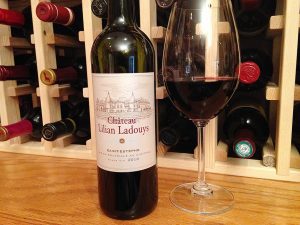Waterstone Carneros Pinot Noir 2012: Restrained nose of cherry and plum foreshadows elegance over power on the palate; plum, unsweetened cherry cola, strawberry, dash of vanilla; subtle tannin, mild acidity, dry finish; tasty, mellow, silky easy drinker. Carneros AVA lies in both Napa and Sonoma in the foothills of the Maycamas range; located just north of San Pablo Bay, the region is moderately cool and windiest part of both Napa and Sonoma; early morning fog is common, all of which makes it a natural home for French clones of chardonnay and pinot noir. Winemakers Phillip Zorn and Brent Shortridge do not own a vineyard or a winery; they stress intelligent sourcing, then make wine at rented facilities. Founded in 2000, Waterstone has built a reputation for wines that stand out for varietal character and balance at a buyer-friendly price. This effort achieves their goal with adroit skill. $22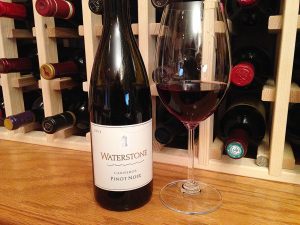
Month: July 2015
Paul Mas Côté Mas Blanc Méditerranée 2014
Paul Mas Côté Mas Blanc Méditerranée 2014: Pale lemon yellow color; pear, melon, citrus on vivid nose; fruity with crisp acidity, citrus, grapefruit, some oak on the palate. Easy sipping summer white made with grenache blanc, vermentino, chardonnay, sauvignon blanc. Wine comes from “sud de France” (southern France), specifically from Languedoc region. Jean-Claude Mas took over centuries-old Domaines Paul Mas in 2000 and has been leader in Languedoc turn from cheap table wine to dynamic, higher quality with a bit of New World edge; this has personality on the palate and will charm your wallet, too. Very nice label captures the fun, carefree mood of the wine. $13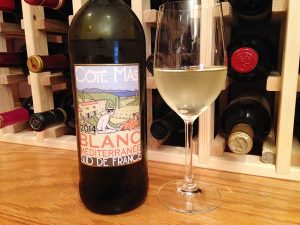
Random wine facts
Random wine facts to calm timorous tipplers and furnish factoids to help you impress friends. Continue reading “Random wine facts”
Chateau Chateau Skulls Red Blend 2012
Chateau Chateau Skulls Red Blend 2012: Intriguing label (skull formed by less threatening natural images, perhaps inspired by Salvador Dali), intriguing wine once made in Australia with grenache and mataro, now made in Spain with equal blend of mencia and tempranillo—but by the same star Aussie winemaker Chris Ringland. Inky black, delightful nose; big, bold, sweet fruit with the mencia adding power and body to the tempranillo; plum, spice, cherry, dark berries, dark chocolate, brown sugar. Soft, full, round; friendly tannin, tasty finish, easy drinker with 14.5% alcohol. Place of origin: Vino de la Tierra de Castilla y León; add to your “Spanish wine is splendid and affordable” list. $19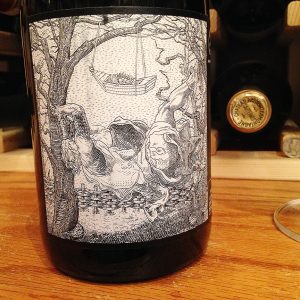
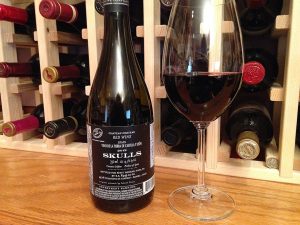
Jean-Claude Mas Arrogant Frog Sauvignon Blanc 2013
Jean-Claude Mas Arrogant Frog Sauvignon Blanc 2013: Lemon-gold color; grapefruit, whiff of smoke on the nose; sharply clean on the palate with zippy citrus, tartness, niblet of green apple; tongue-slicing acidity is most-outstanding characteristic, which should make it superb pair with shellfish, grilled seafood, vegetable dishes. This is French Languedoc’s answer to New Zealand; it has less grass and more tart freshness, but both are savagely good food wines. The brand name has multiple levels of meaning. The French (“Frogs” in the argot of some levels of English society—lads Frenchmen call “Limeys”) are sometimes known for arrogance, so this may smugly play on that stereotype. Fourth-generation Jean-Claud Mas claims this is “direct response to an arrogant assumption that the Languedoc region can’t produce world class wines.” Languedoc (and the greater region of Languedoc-Roussillon) is located in southern France near northeast Spain, touching the Mediterranean; Toulouse is its major city. The region once had deserved reputation for over-production of mediocre jug wine, much like the Central Valley of California. Today, much like those areas in California, emphasis has shifted from massive crop yields to affordable quality. Mas is a leader in the change; he has the largest privately-owned winery in France outside of Champagne; this effort is dead-on, value-priced, winner of a summer sipper. $11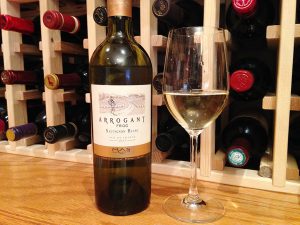
The Dreaming Tree Chardonnay Central Coast 2013
The Dreaming Tree Chardonnay Central Coast 2013: Straw gold color; mouthful of juicy pear, peach flavors on the attack, citrus tingle and honey-vanilla on the finish; toasty oak, medium-full body; a straight-forward, friendly pour at decent price; works well as a laid-backer sipper and will pair with food thanks to 3.45 pH acidity. The Central Coast AVA extends from Santa Barbara County in the south to San Francisco Bay in the north and is cooled by the Pacific Ocean to the west; chardonnay and pinot noir are vineyard stars—chardonnay accounts for more than half of the grape acres. This is very pleasant example of the AVA’s middle-range offerings. The Dreaming Tree is collaboration between South African musician Dave Matthews and acclaimed Simi-based winemaker Steve Reeder; taste with the Dave Matthews Band “Big Whiskey and the GrooGrux King” album playing in the background. As you might expect from a rock star and rock-star winemaker alliance, this is environmentally friendly effort, with lightweight bottles, 100% recycled paper labels, black ink printing (no bleaching), recyclable corks, and Wine Institute certification as sustainable agriculture. Rock on and enjoy with a clean conscience. $14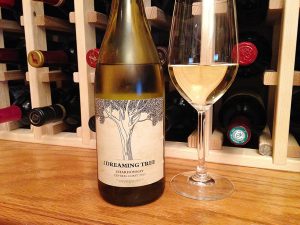
Giesen Marlborough Sauvignon Blanc 2014
Giesen Marlborough Sauvignon Blanc 2014: Pale yellow color; lemongrass, tropical fruit on the nose; very crisp, fresh lime, citrus, pink grapefruit, blades of classic Marlborough grassiness throughout; medium body, lean, dry with undercurrent of ripe-fruit sweetness; cutting, food-friendly acidity; lingering finish. New Zealand put well-priced, astonishingly food-friendly sauv blanc on the world wine map, and the three Giesen brothers—now beginning their fourth decade as major players in the effort after immigrating from Germany in 1981—consistently deliver large quality in large quantity (no easy feat). This is widely available, fairly priced, and a can’t-miss default pairing with almost any food you put on your table. Tasty, true to Marlborough terroir, another Giesen success. $14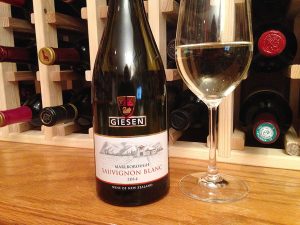
Château Cap de Faugères Côtes de Bordeaux Castillon 2011
Château Cap de Faugères Côtes de Bordeaux Castillon 2011: Dark purple color; elegant, complex nose promises baskets of dark fruit; delivers on the palate with jammy chocolate cherry, deliciously brisk black currant tang, black cherry, hint of oak, bit of balsamic; warm, rich, savory, full-bodied with gently restrained, slightly chewy, slightly sweet tannin. Made from 85% merlot, 10% cab franc, 5% cabernet sauvignon, it has superb purity, enchanting texture in the mouth, and splendid length. This is all you need to taste to be convinced about the massive value of Côtes de Bordeaux—extraordinary quality at reasonable prices. The Esquissaud family acquired Château Cap de Faugères in 1823; in 2005 Silvio Denz purchased the renowned estate; in 2008, Robert Parker wrote: “Always one of the top Côtes de Castillons.” Imposing history, modern endorsement, it doesn’t get much better. Côtes de Castillons is one of the easternmost appellations in Bordeaux and was created in 2009 to bring together several small côtes (sides) under a single banner. This effort is sincerely worth a taste. $21-25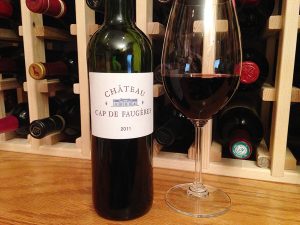
Kim Crawford Pinot Gris Marlborough 2014
Kim Crawford Pinot Gris Marlborough 2014: Pale gold color; delicate nose; delivers with good fruit on the palate, peach, apple, pear, melon, honey; clean, bright pleaser, good acidity. Kim Crawford and his wife, Erica, have been meteoric trailblazers in New Zealand wines since the late 1990s, charging onto the world wine stage in the 2000s with year-after-year 90-point scores from the various panjandrums of wine scores. While KC is most noted for superb sauvignon blanc, this pinot gris has delightful fruit-forward sweetness with blade of New Zealand grass and expected food-friendly, palate-cleansing acidity. Refreshing, easy drinking, appropriate price. $16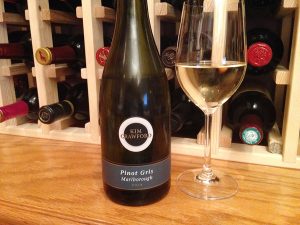
Château Lilian Ladouys Saint-Estèphe 2010
Château Lilian Ladouys Saint-Estèphe 2010: Inky ruby-black; red fruits take time to open for the nose, then reward; muscularly flaunts power of cab-driven Saint-Estèphe with full, puckery tannin, rich blackberry, black currant, oak, smoky toast, earth on the palate. Some Saint-Estèphe are suave and reserved (usually merlot-driven), this immediately lets you know you have a robustly serious Bordeaux in your mouth—60% cab, 40% merlot. Full body; swirl-a-lot or decant-an-hour-plus to bring out its best. Saint-Estèphe is the northmost of the six communal appellations of Médoc. Serious, impressive, big-boy pour; not made for faint-of-palate newbies, but seasoned sippers will enjoy a fling with Lilian Ladouys. $35